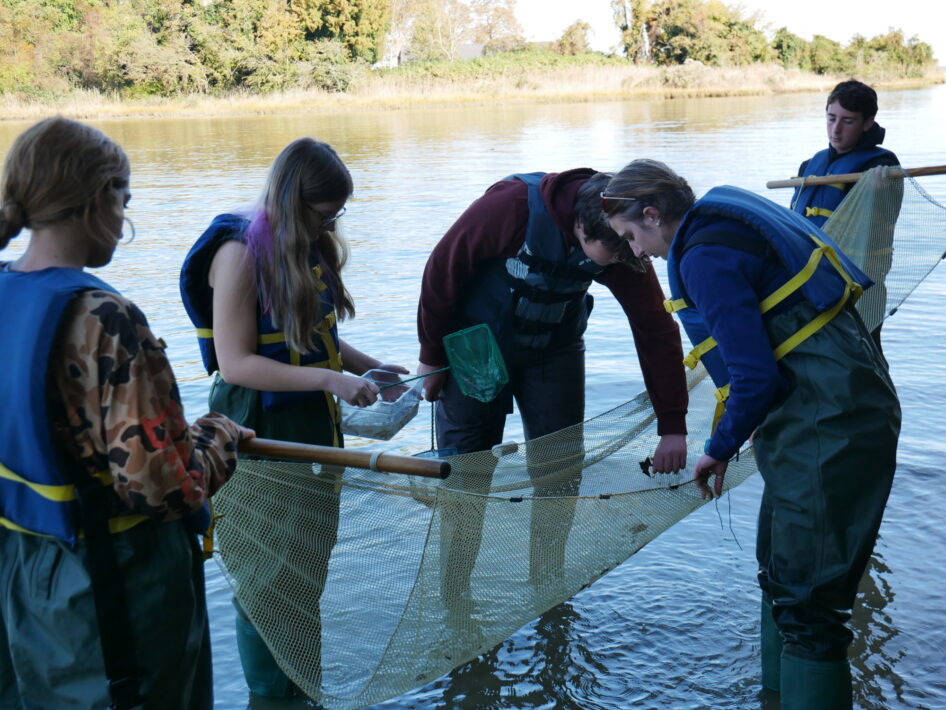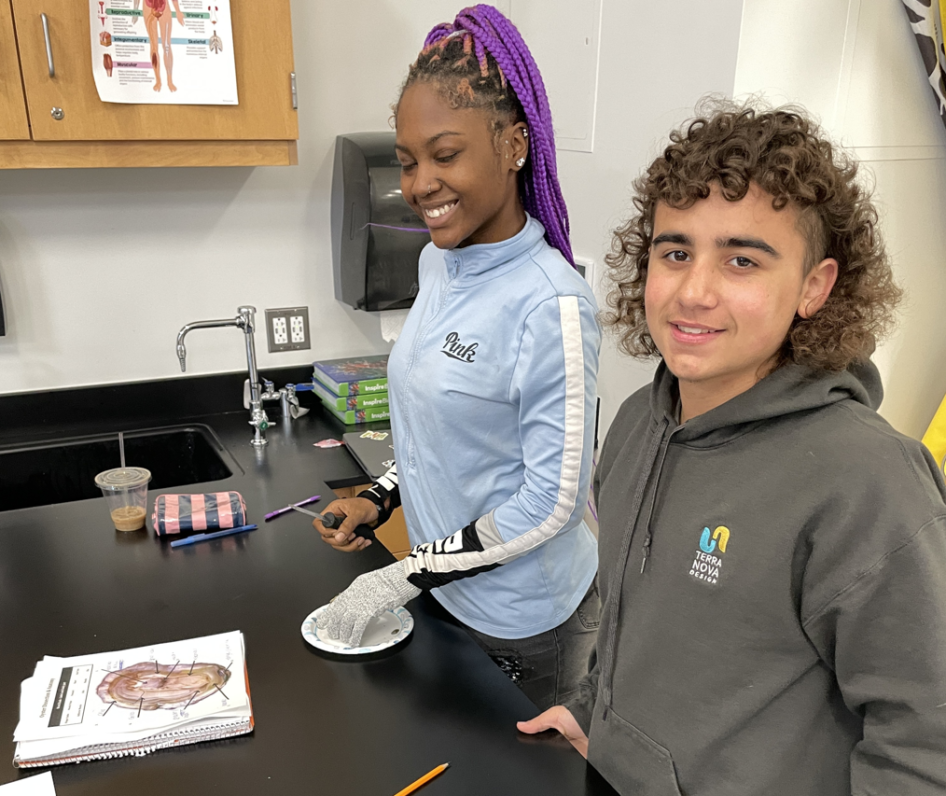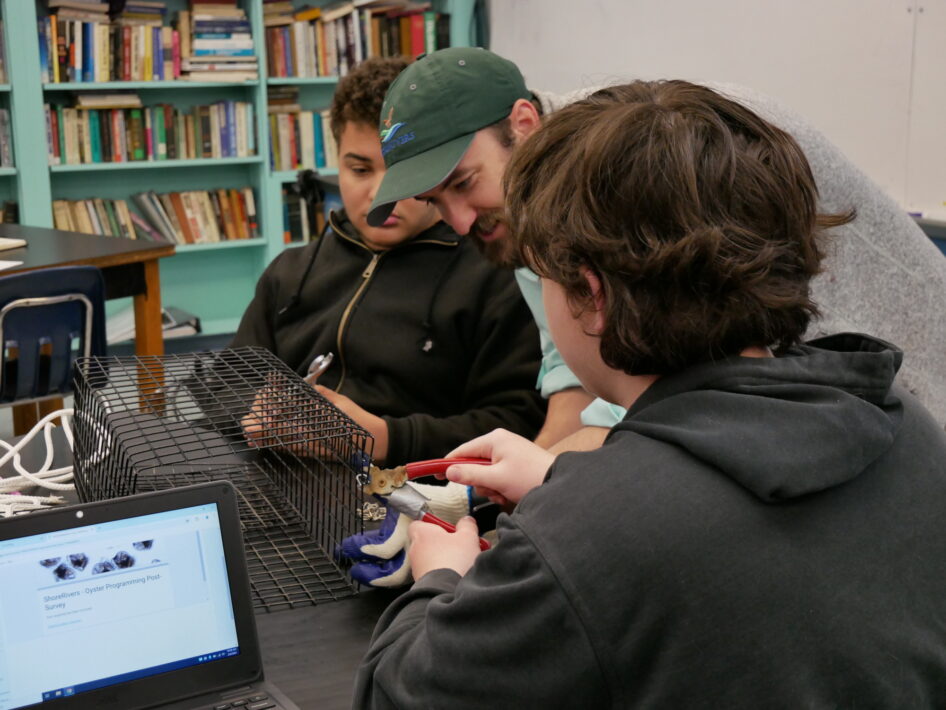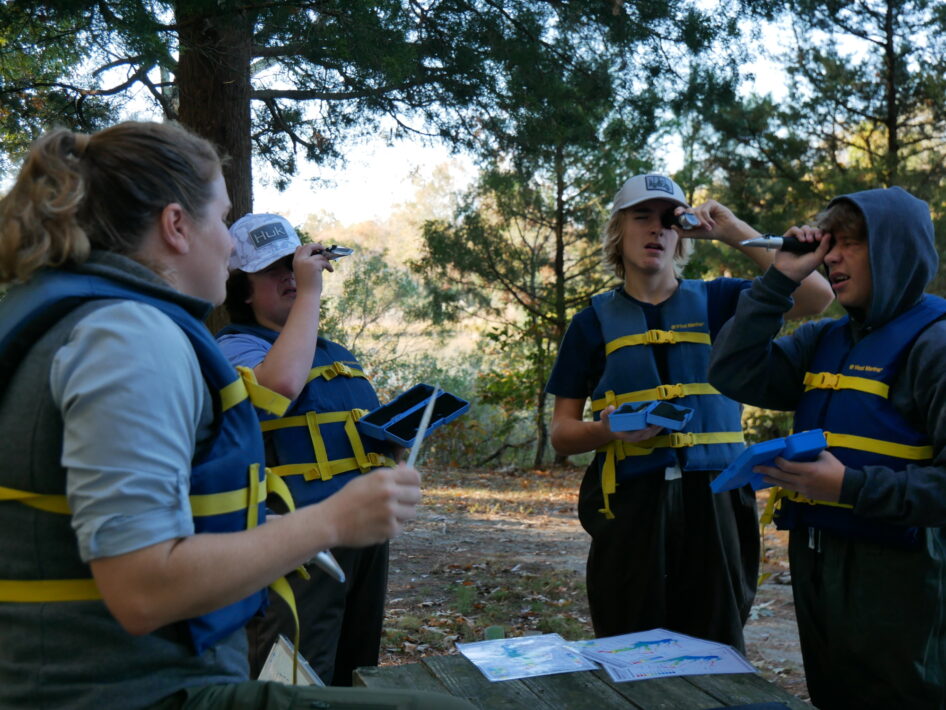A System Worth Shell-ebrating: Building a MWEE on Maryland’s Eastern Shore

by Aidan Fisher, Educational Programs Manager, ShoreRivers
Laughter, squeals of both delight and disgust, and the soft scrape of shucking knives are the most prominent sounds heard during a classroom oyster dissection. When it comes to getting students excited about science and the local environment, nothing quite beats popping open an oyster. Especially if students should happen to spot an elusive pea crab or even a pearl!
Dissection lessons are often the first part of the systemic Meaningful Watershed Educational Experience (MWEE) that ShoreRivers has established for ninth graders on Maryland’s Eastern Shore. Starting with just one school back in 2013, the program has grown to include six high schools across three different counties, serving about 1,500 students each year. With a focus on oysters and their critical role in the Chesapeake Bay, this MWEE program is constantly changing; receiving updates and tweaks as teachers and ShoreRivers educators continue to audit and evaluate its impact. While the content of the program is robust and engaging, the program’s real strengths lie with ShoreRivers’ ongoing partnerships with three school systems and the University of Maryland Center for Environmental Science’s Horn Point Laboratory.

Oyster Hatchery Partnership brings this MWEE to Life!
What better place could there be for an oyster-themed outdoor field experience than at the largest oyster hatchery on the east coast?
Horn Point Lab has offered environmental education for over 20 years and they have become an essential partner for this MWEE. Hatchery Director Stephanie Tobash-Alexander and other staff work closely with the ShoreRivers Education Department to incorporate the most up-to-date oyster science into each student visit while providing an intimate glimpse into their work and careers. Students tour the oyster hatchery to see first-hand how millions of spat are produced and taken to oyster reef restoration sites every year.

In addition to the hatchery tour, students also wade into the Choptank River to evaluate ecosystem health with a biotic survey and by completing abiotic measurements like dissolved oxygen, turbidity, and salinity. Many students and teachers say the hatchery experience is their favorite part of the MWEE!
Challenges are Best Tackled Together
Scheduling is one of the greatest challenges when working with multiple partners. When planning outdoor programming with schools, one must constantly thread the needle between state testing, cold winter weather, and the curricular timeline of each school. These factors ultimately leave only a few weeks for field experiences each semester. The support from each partnering school system and teacher is necessary to plan a program of this size.
This support starts at the beginning of each school year when the central offices in Dorchester, Talbot, and Queen Anne’s counties dedicate time for ShoreRivers to meet with both their science coordinators and teachers. ShoreRivers schedules approximately 80 days worth of class visits, field trips, and action projects, laying out every day of the program. With so many dates on the calendar, flexibility, consistency, and open communication are essential to maintain a good relationship. The ShoreRivers and teacher relationships are also strengthened during summer professional development when new and experienced teachers learn about program updates and receive training on implementing the MWEE.
Funding a MWEE of this size is another significant challenge. The program originally started with a grant from the Chesapeake Bay Trust, and was then funded through Maryland Community Investment Tax Credits, which allowed ShoreRivers to incentivize fundraising for the program. Currently, the program is funded through a mixture of member donations, local foundations, and state funds through the Maryland State Department of Education’s State-Aided Institution (SAI) program, which allows non-profit organizations like ShoreRivers to bring environmental programming to Maryland students. This diverse mix of grants and donations from members and foundations has not only allowed ShoreRivers to scale the programming to reach more students, but also to grow and add elements while auditing the MWEE. For example, one funding source might allow ShoreRivers to pay the hours for staff, while another might allow them to replace or add new equipment.

Inspiring Students, Celebrating Partnerships, and Looking Forward
This MWEE will be entering its 14th season during the 2025–2026 school year. During those 14 years, it has supported thousands of ninth-grade Maryland students as they work towards Maryland’s Environmental Literacy graduation requirement. This program has also allowed students to form a connection with their local environment and community that may not have existed otherwise.
“Ultimately, this program has been successful because schools have bought into this partnership,” says Suzanne Sullivan, Director of Education at ShoreRivers. When the program started in 2013, “we [ShoreRivers] didn’t even have an education department, but that first field trip made us realize how important it was to include students in our mission for healthy rivers.” With the continued dedication and support of ShoreRivers' staff and partners, this MWEE will continue to inspire and educate students for years to come!
